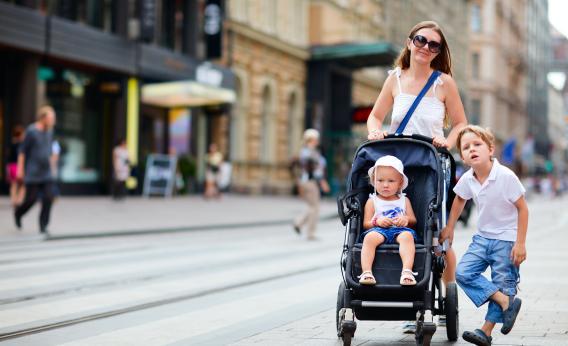In a piece titled “The Overhyped Rise of the Stay-at-Home Dads,” the Atlantic’s Jordan Weissmann punctures the trend-story picture of armies of dads taking over the playground. Though the number of stay-at-home dads has doubled since 1994, families with SAHDs only account for less than 1 percent of couples with kids under the age of 15. That number is also very low when compared to the percentage of stay-at-home moms of children under 15 in the U.S.—23 percent.
But that 23 percent number can be misleading too, because stay-at-home-mom-dom is just a snapshot in time: it’s not a permanent title for most of those women. The time women spend out of the labor force when they do become SAHMs has been getting shorter, says historian Stephanie Coontz, the author of The Way We Never Were: American Families and the Nostalgia Trap. “The mommy wars assume and contribute to a phony distinction between two supposedly distinct categories of women”—working mom versus stay-at-home mom—“but most women transition through several different stages of work and family status,” Coontz says.
The statistics bear this out. According to Sarah Jane Glynn, associate director of women’s economic policy at the Center for American Progress, in 2012, women with a child under age 6 had a labor force participation rate of 64.8 percent, while women with children between the ages of 6 and 17 had a participation rate of 75.1 percent. “This indicates that women often return to work once their children reach school age,” Glynn told me via email. “I suspect the rate would continue to rise if you broke the age groups down even further.”
The current discussions about mothers, fathers and work tend to treat the issue like a zero sum game: Opt out! Lean in! Regret opting out and try to lean in! But in fact, the vast majority of people, regardless of gender, both want to work and to parent, and fathers are just as likely to feel the pressure of work-life balance as mothers. These are complicated, nuanced problems—not nearly as easy to write about as those wealthy stay-at-homes carting their kids to the Hamptons because school is starting a week later than usual, but much more worthwhile.
Correction, September 4, 2013: The original version of this post misstated Sarah Jane Glynn’s title and the organization for which she works.
